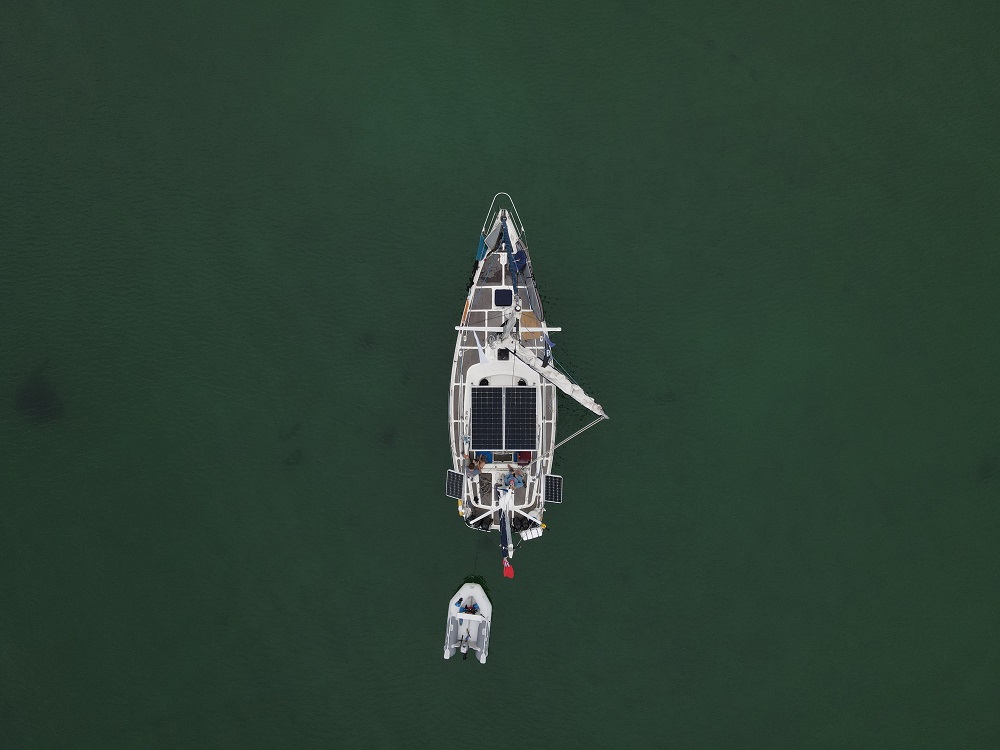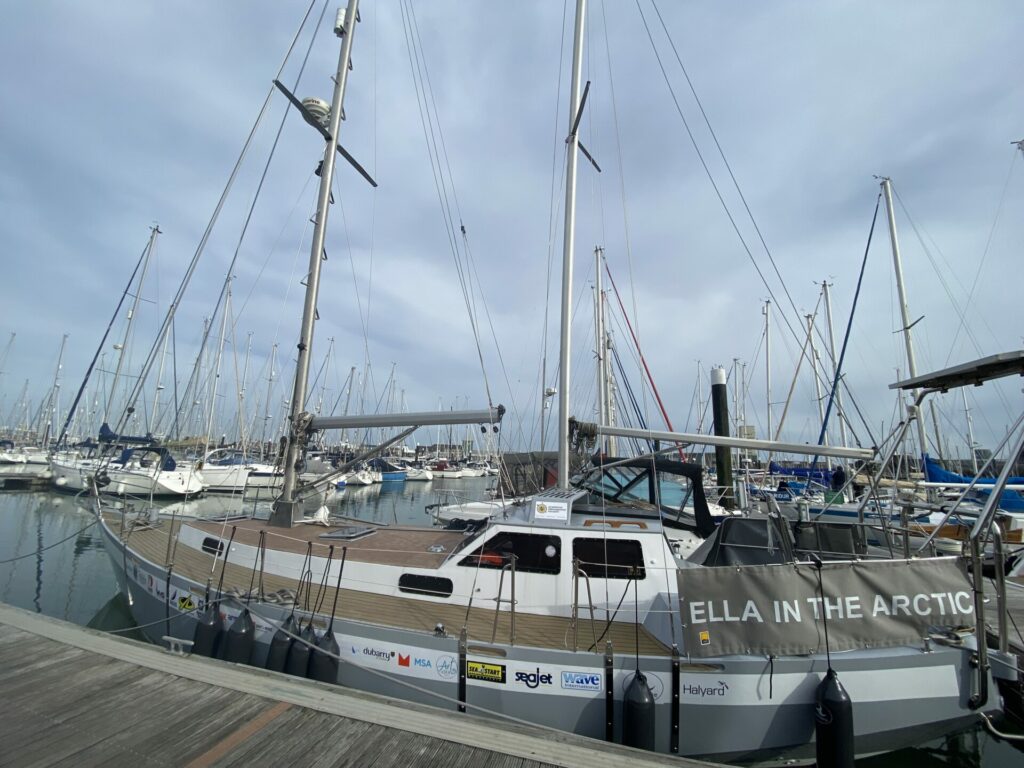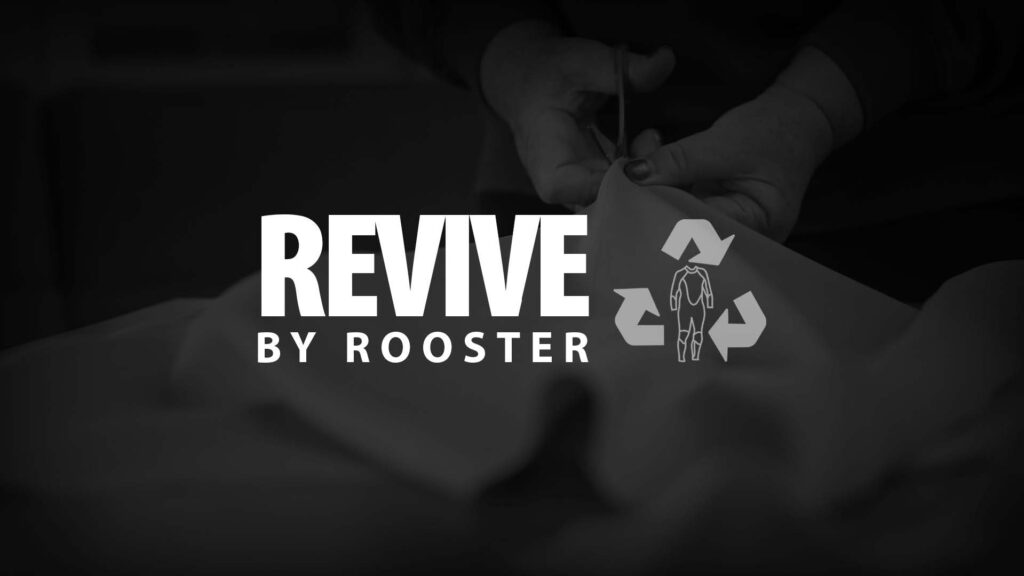George and Sinead, otherwise known as the Electric Vagabonds, live aboard an Oyster 35 Mariner, named Muhuhu. The two sailors try to live with sustainability at the forefront of their minds, and as such, have re-fitted their boat with an electric engine, powered by wind and sun.
In part one of our Q&A with the Electric Vagabonds, we learn why they chose to re-fit Muhuhu with an electric engine and what other changes they’ve made to lower their lifestyle’s environmental impact.
How did your passion for sustainable boating first come to light for you?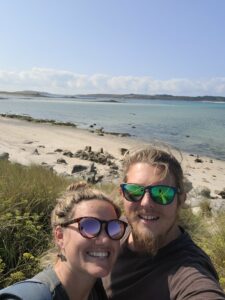
We bought the boat because we wanted to be able to travel the world, without the expense (monetary and environmental) of flying. So, from the beginning it was meant as a low impact and minimalistic way to live and see the world. Although we soon realised that the diesel engine that we used to have to propel the boat was anything but minimalistic and low impact!
We’ve sailed dinghies for years and had always dreamt of living and travelling on a bigger boat. Ironically, we’ve probably spent enough to fly us both around the world but, now we own our own home, and can travel for the rest of our lives just using wind and sun.
What type of boat is Muhuhu?
Muhuhu is an Oyster 35 Mariner, hull moulded in 1982, fitted out through the 1980’s and launched in 1991. She weighs 12.5 tonnes and has a ketch rig. The boat had the highest volume to length ratio we saw, and we looked at many many designs – we looked at around 30 boats before we bought this one. She’s not the fastest, but for 35ft there’s a surprising amount of space, and she’s still small enough to sail single-handed.
Muhuhu carries everything we need to live and adventure. All our fun stuff too, snorkelling kit, wing foiling gear, hammocks, tents, SUP boards. She has a workbench with standing headroom in the cockpit locker, complete with a vice, AC power, all our tools, power tools, and spares. We can even weld off-grid at anchor if needed. We’ve sailed over 2000Nm so far, using no diesel.
What changes and adaptations have you made to Muhuhu or on-board generally to make boating more sustainable?
The old Perkins 4108 diesel needed a rebuild, and the fuel system needed some serious attention,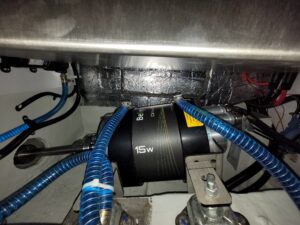 the tank was full of grime and fuel bug residue after the boat had been sitting still for so long before we bought her. The engine bay also needed a refurbishment. The wiring in the engine bay was a mess. This was going to cost a lot of money and time, and for that price, we could install an electric propulsion system ourselves.
the tank was full of grime and fuel bug residue after the boat had been sitting still for so long before we bought her. The engine bay also needed a refurbishment. The wiring in the engine bay was a mess. This was going to cost a lot of money and time, and for that price, we could install an electric propulsion system ourselves.
So, Muhuhu is now powered by a 15kW liquid cooled motor from Fischer Panda UK, made by Bellmarine. We rarely use the full 15kW, in fact she’ll do 4 knots at just under 4kW power, with a clean hull. The energy for this all comes from wind, solar, and regeneration through the propeller when we’re sailing. The energy system was put together and sourced from SailElectric. Energy is stored in lithium batteries, which whilst not being great for the environment, are definitely the lesser of many evils, and in future maybe could be part of a circular economy, which is impossible with fossil fuels.
We’ve also made many other changes, from the way we avoid creating waste, to the way we maintain the vessel. Everything is done to create minimum impact, from the way we eat, to the clothes we buy (or don’t)! We also only use eco cleaning products, from Ecover, Ocean Saver or Ecoworks Marine.
Why did you choose to fit an electric engine? What benefits does it bring?
Many benefits! Some we knew about prior, and some we discovered along the way.
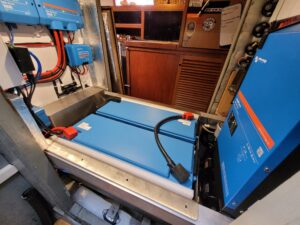
Firstly, the lack of maintenance required. We wipe the system down with a slightly damp cloth twice a year. Some bits get wiped with WD-40 and a rag. We check for corrosion, wear and tear, check some bolts and screws, and then put the engine bay cover back on for another 6 months! (Not strictly true, often we open it to show fellow boaters the brain of the boat, people are amazed when they see it!)
It’s also quiet, super quiet. Sleeping on passage, observing wildlife, anchoring without waking other boats, boat life in general has all become more pleasant. It’s also not smoky, doesn’t drip oil, and doesn’t vibrate. Our old engine sounded like a bag of spanners, now we just hear the water on the hull. The solar panels generate up to 1kW of power, completely recharging our batteries from empty in under two days. Although, they’ve never been below 50% discharged yet.
The only thing we miss about the old diesel is switching it off. The transition from noisy motoring to silently gliding through the water under sail, is now something we don’t experience, it’s silent all the time. We definitely prefer it this way though.
We have power for everything. The renewable energy system was put together with some help from our friend Wayne at SailElectric. It was intended to provide power for propulsion, but with the inverter, and 48V – 12V converter, actually can provide power for everything on board. We’ve lived off-grid since 26th February this year, and in that time have not plugged into the shore power once. We cook on an electric induction hob, we have at least a tank of hot water every day, and AC power for working and living remotely.
Have you experienced any unexpected positives as a result of becoming more eco-conscious?
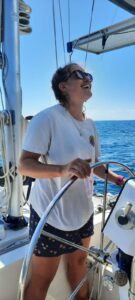
Our way of life is cheaper. Fuel prices are higher now, and we don’t use any fossil fuels. We buy less new things in general. We repair stuff, buy second hand, and make things last. Sinead is an eBay wizard. We produce less plastic waste. And what we do produce, is mostly recyclable, so less trips to land for bins are required, meaning we can stay anchored in remote spots longer. Because our boat is silent, even when motor sailing, we see way more wildlife. Dolphins and seals in particular, are very curious about the silent motor!
Next month, you can read Part 2 of our Conversations with… the Electric Vagabonds, when we’ll learn how the pair keep so positive amongst the negative environmental forecasts, and George and Sinead will be sharing their top tips for increasing sustainability on the water.
You can follow the Electric Vagabonds’ adventures on their Instagram page @electricvagabonds.
If you would like to learn more about electric engines, visit the Sail Electric website.

